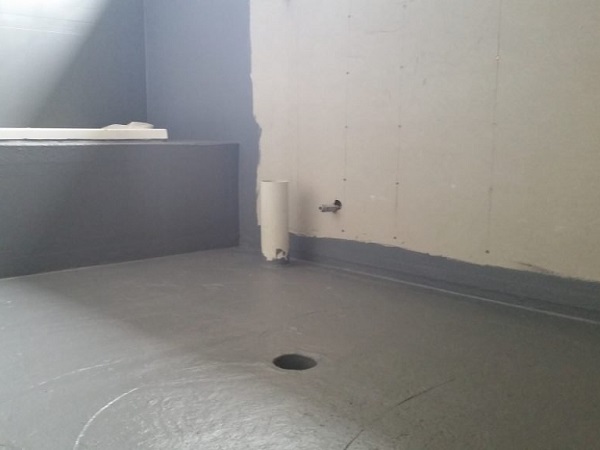Preparing for Waterproofing: Essential Steps Before You Begin
When it comes to protecting your home from water damage, waterproofing is a crucial step. Whether you’re waterproofing your basement, roof, or other vulnerable areas, proper preparation is key to ensuring the effectiveness and longevity of the waterproofing process. In this comprehensive guide, we’ll explore the essential steps to take before waterproofing to guarantee the best results.
Assessing the Area
Before diving into the waterproofing process, it’s crucial to thoroughly assess the area that needs attention. Identify any existing water damage, leaks, or weak points in the structure. Take note of cracks in walls, gaps around windows and doors, and any signs of water infiltration. Understanding the current condition of the area will help you determine the most suitable waterproofing methods and materials.
Inspecting the Foundation
Begin your assessment by inspecting the foundation of your home. Look for cracks, holes, or any areas where water might be seeping through. Addressing foundation issues is a fundamental step in waterproofing, as a compromised foundation can lead to serious structural damage over time. If you notice any significant foundation issues, it’s advisable to consult with a professional contractor to assess the extent of the damage and recommend appropriate repairs.
Clearing Debris and Cleaning Surfaces
One of the critical pre-waterproofing tasks is clearing debris and cleaning surfaces. Remove any leaves, dirt, or other debris from gutters, downspouts, and drainage systems. Clogged gutters can lead to water overflow, increasing the risk of water damage. Additionally, clean the surfaces that will be treated with waterproofing materials. Remove any existing coatings, paint, or sealants to ensure proper adhesion of the waterproofing products.
Repairing Existing Damage
Before applying waterproofing materials, it’s essential to address any existing damage to the surfaces. Repair cracks in walls or foundation using an appropriate filler or patching compound. Fixing these issues before waterproofing ensures that the water barrier is applied to a structurally sound surface, maximizing its effectiveness. Small cracks and leaks, if left unattended, can compromise the overall waterproofing solution.
Choosing the Right Waterproofing Products
Selecting the right waterproofing products is a crucial step in the pre-waterproofing process. Consider the specific needs of the area you’re waterproofing, such as whether it’s a basement, roof, or exterior walls. Different materials may be suitable for different applications. Common waterproofing products include sealants, membranes, and coatings. Research and choose products that are compatible with the surface you’re treating and provide the level of protection required.
Understanding Different Waterproofing Methods
There are various waterproofing methods, each designed for specific applications. Understanding these methods is essential for choosing the right approach for your project. Some common waterproofing techniques include:
Exterior:
This involves applying waterproofing materials to the outside of the structure, creating a barrier against water intrusion. It is particularly effective for preventing water from reaching the foundation.
Interior:
This method focuses on preventing water from entering the interior of the building. It often includes applying sealants or coatings to basement walls and floors.
Crystalline:
This innovative method involves using crystalline compounds that react with water to create a waterproof barrier. It’s a durable and long-lasting solution for various surfaces.
Ensuring Proper Ventilation
Proper ventilation is often overlooked but is a crucial aspect of the pre-waterproofing process. Adequate ventilation helps prevent moisture buildup, reducing the risk of mold and mildew growth. Ensure that the area is well-ventilated by installing vents or fans if necessary. Good air circulation contributes to the overall health of the structure and complements the efforts.
Checking Drainage Systems
An effective drainage system is essential for preventing water accumulation around your home. Check that your gutters and downspouts are in good condition and functioning correctly. Consider installing additional drainage solutions, such as French drains, to redirect water away from the foundation. A well-maintained drainage system complements the process by minimizing the risk of water pooling around vulnerable areas.
Sealing Gaps and Cracks
To enhance the effectiveness of it, seal any gaps or cracks in the building’s envelope. Pay special attention to areas around windows, doors, and utility penetrations. Use a high-quality caulk or sealant to close these openings, preventing water intrusion. This meticulous approach ensures that every potential entry point for water is addressed, leaving no room for surprises after the waterproofing is complete.
Applying a Primer
Before applying materials, consider using a primer. A primer helps create a bond between the surface and the product, improving adhesion and overall performance. Choose a primer that is compatible with both the surface material and the selected product. Applying a primer is an additional step that contributes to the longevity and effectiveness of the solution.
Consulting with Professionals
While many homeowners can tackle minor projects, more extensive or complex tasks may require professional assistance. If you’re unsure about the best approach for your specific situation or if you’ve identified significant structural issues, consulting with professionals is advisable. They can provide expert guidance, conduct a thorough assessment, and recommend the most appropriate solutions for your home.
Scheduling Regular Maintenance
Once the waterproofing is complete, don’t forget about ongoing maintenance. Regularly inspect the treated areas for signs of wear, damage, or the need for reapplication. Address any issues promptly to ensure that it continues to provide reliable protection against water damage over the long term.
Conclusion
In summary, proper preparation is essential before embarking on a project. Assessing the area, clearing debris, repairing existing damage, choosing the right products and methods, ensuring proper ventilation, checking drainage systems, sealing gaps, applying a primer, and consulting with professionals are all crucial steps to take before doing it. By investing time and effort in these tasks, you set the stage for a more effective and durable solution, ultimately protecting your home from the damaging effects of water infiltration.

